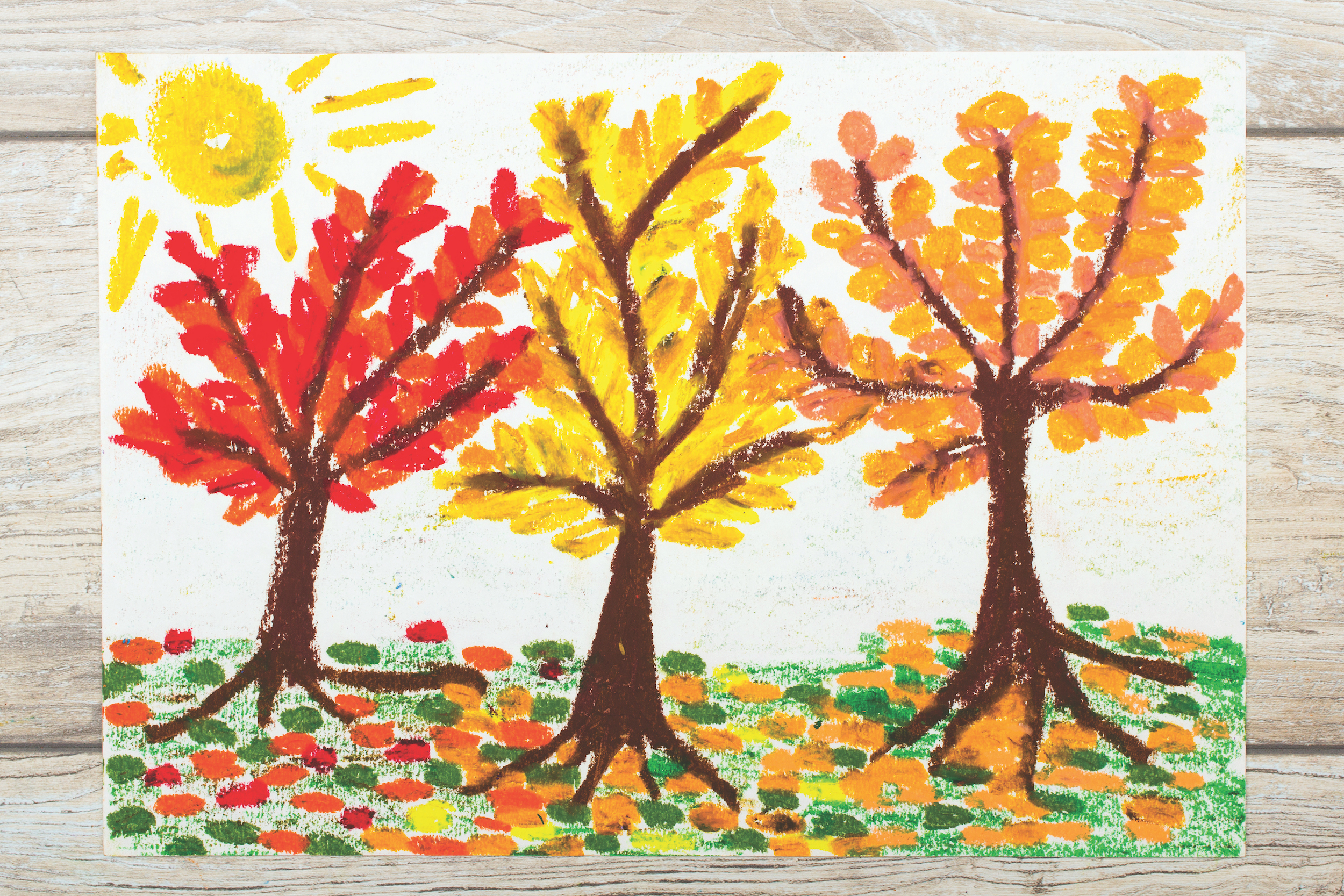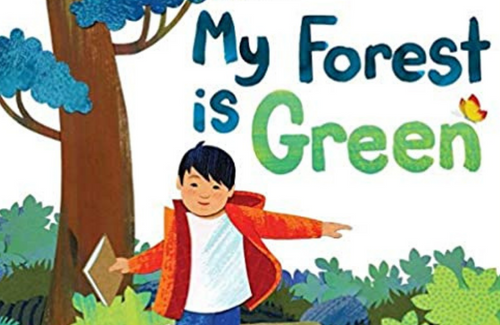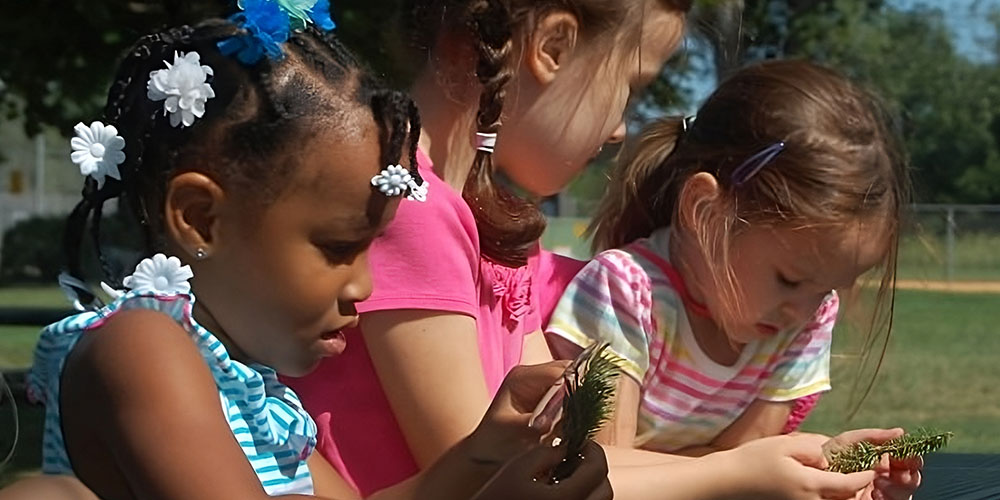The Closer You Look
Even though students may be very familiar with trees, they may not have thought much about the actual structure of a tree. In this activity, your students will go outdoors or view pictures to take a closer look at trees and their parts.
Objectives
Students will
- Compare their drawing of a tree from memory with an observation of a real tree.
- Identify characteristics of a tree’s form and structure.
For the complete activity and more like this, purchase it from Shop.PLT.org as part of the Sensational Trees activity collection and/or find out about professional development opportunities in your state.
Explore Your Environment: K-8 Activity Guide is a supplementary curriculum that is multi-disciplinary, with an emphasis on science, reading, writing, mathematics, and social studies.
Each activity displays explicit connections to practices and concepts expected by the following national academic standards so teachers can easily see where the materials will fit into their lesson plans:
- Next Generation Science Standards (NGSS)
- Common Core Toolkit, includes
- English Language Arts (CCSS.ELA)
- Mathematics (CCSS.MATH)
- College, Career, and Civic Life Framework for Social Studies (C3)
Our professional development further demonstrates these connections, as well as to state and local standards, contact your state coordinator.
My Forest is Green
Follow along a curious young boy who explores the urban forest near his home and describes the shapes, textures, and colors of the plants and animals that live there and encourages young children to observe and appreciate the nature around them.
Bird Count
This book is a fictional narrative about a girl who participates in the Audubon Bird Count each year. The story follows Ava, her mother, and their team leader, Big Al, through a full day of the Bird Count.
Welcome to New Zealand – A Nature Journal
Welcome to New Zealand: A Nature Journal Grades 3-5 ISBN-13: 978-0763674779 Candlewick, 2015 Recommended Reading Are you interested in studying cloud formations or moon phases? Urban ecosystems or wetland areas? The forest canopy or tidal pools? No matter your topic of study, Morris’ Welcome to New Zealand: A Nature Journal has inspiration for you. ... Read more »
EE Resources
Indigenous Connections to PLT Activities
The Minnesota Department of Education includes Indigenous-based learning benchmarks in science, language arts, and social studies. Learn how the Minnesota DNR worked with tribes to adapt several PLT activities to include Ojibwe and Dakota culture and knowledge, and get some tips for teaching about Indigenous Peoples with knowledge and respect. Access the Ojibwe and Dakota... Read more »
NGSS Correlations for “The Closer You Look”
Download “The Closer You Look” NGSS Correlations which includes a guiding question, science connections found in the activity, and explicit NGSS correlations. The Next Generation Science Standards (NGSS) define what students should know or be able to do at the end of instruction. This activity provides students opportunities to explore the three dimensions of science... Read more »
Video demo: The Closer You Look
Watch The Closer You Look Demonstration video (11 minutes). PLT’s The Closer You Look helps students learn about trees and tree parts. This video was developed by Danielle Ardrey, Colorado PLT Coordinator, this step-by-step instructional video offers guiding questions and examples of tree drawings.
BeLEAF it or Not: How to Identify Trees
Learn about tree Identification in this “BeLEAF it or Not” video How To Identify Trees. Michigan foresters, Bill Cook and Georgia Peterson explain some identification characteristics of trees, such as bark, buds, fruits, and leaves. They also explain the Latin/two-part scientific names for living things that allow people throughout the world to communicate unambiguously about... Read more »
Tree Rings Simulation
The science of tree rings is called dendrochronology. Tree rings help scientists learn about past climates by decoding tree ring patterns. Climate scientists use clues from ice cores, layered sediment deposits in lakes and seas, the structure of coral reefs, as well as tree ring sequences to learn about paleoclimates. The use of tree ring records... Read more »
Identify Trees from Leaves
Leafsnap is a free app that uses visual recognition software to help identify tree species from leaf photographs you take in the field. Leafsnap currently focuses on tree species found in the Northeastern United States and Canada, but expansion is underway to include all U.S. regions.
Find Nearby Trails and Parks
AllTrails is a free app that helps users discover the outdoors. Use it to find a hiking path suitable for children, to search for local places to bike or fish, or to plan a national park visit.
Discover the Forest
A program of the Ad Council and U.S. Forest Service, Discover the Forest offers resources that help families discover nearby forests and provides tips on how to prepare for and enjoy outdoor adventures.
Inner Parts of A Tree Model
Help students visualize the inner layers of a tree trunk and better understand the function of its different parts by creating this easy-to-make visual aid – a cross-section of a tree trunk.
A Forest Year
Check out this video, which captures 15 months of a forest’s life. This 3-minute time lapse video was created from 40,000 photographs. Photographer Samuel Orr took pictures out of the same window in his home to create this forest montage. This forest snapshot is just outside of Bloomington, Indiana and was photographed between 2006 and... Read more »
YouTube Dendrology
Dr. Don Leopold, State University of New York’s College of Environmental Science and Forestry professor, has identified a total of 135 tree species on YouTube. These 2-minute, high definition videos briefly summarize how to identify each tree species, its ecological characteristics and importance, and communicate fun facts. While the list of native and non-native tree... Read more »
Functions of Forest Soil
This informational handout, made available by Montana State University Extension Forestry, describes forest soil profiles, functions, and the effects that natural and manmade impacts can have on overall forest health.
Life: Magnified
Life: Magnified was an exhibit of scientific images showing cells and other scenes of life magnified by as much as 50,000 times. The exhibit was on display at Washington Dulles International Airport’s Gateway Gallery from June 2014 through January 2015. The supporting Life: Magnified website features high-resolution version of all 46 images in the collection... Read more »
Scratch
Using Scratch, educators of all ages and levels can program interactive stories, games, and animations and share their creations in an online community. Click on For Educators to access tips and resources for using Scratch in the classroom, including an introductory video, how-to tutorials, and a webinar. Teachers can also join the ScratchEd community to... Read more »
Epic! For Educators
Are you looking for new literature connections to support your favorite PLT lessons? This growing Epic! online library offers thousands of picture books, chapter books, early readers, and even nonfiction books (think Common Core Connections!) that elementary teachers can access free of cost. Registered users receive unlimited access to books and customized recommendations for readers’... Read more »
Remote Ready Student Pages – The Closer You Look
Google Slides and Docs are great tools for facilitating remote learning and student collaboration. They can be integrated into Google Classroom or other e-learning platforms. Check The Closer You Look for our remote-ready educator instructions and student pages. Please note: Resources are available as view only and require that you make a copy to your own Drive in... Read more »
Login to download supporting materials such as appendices and teaching tips.
Login
 Get this Guide
Get this Guide
 Find Training
Find Training



